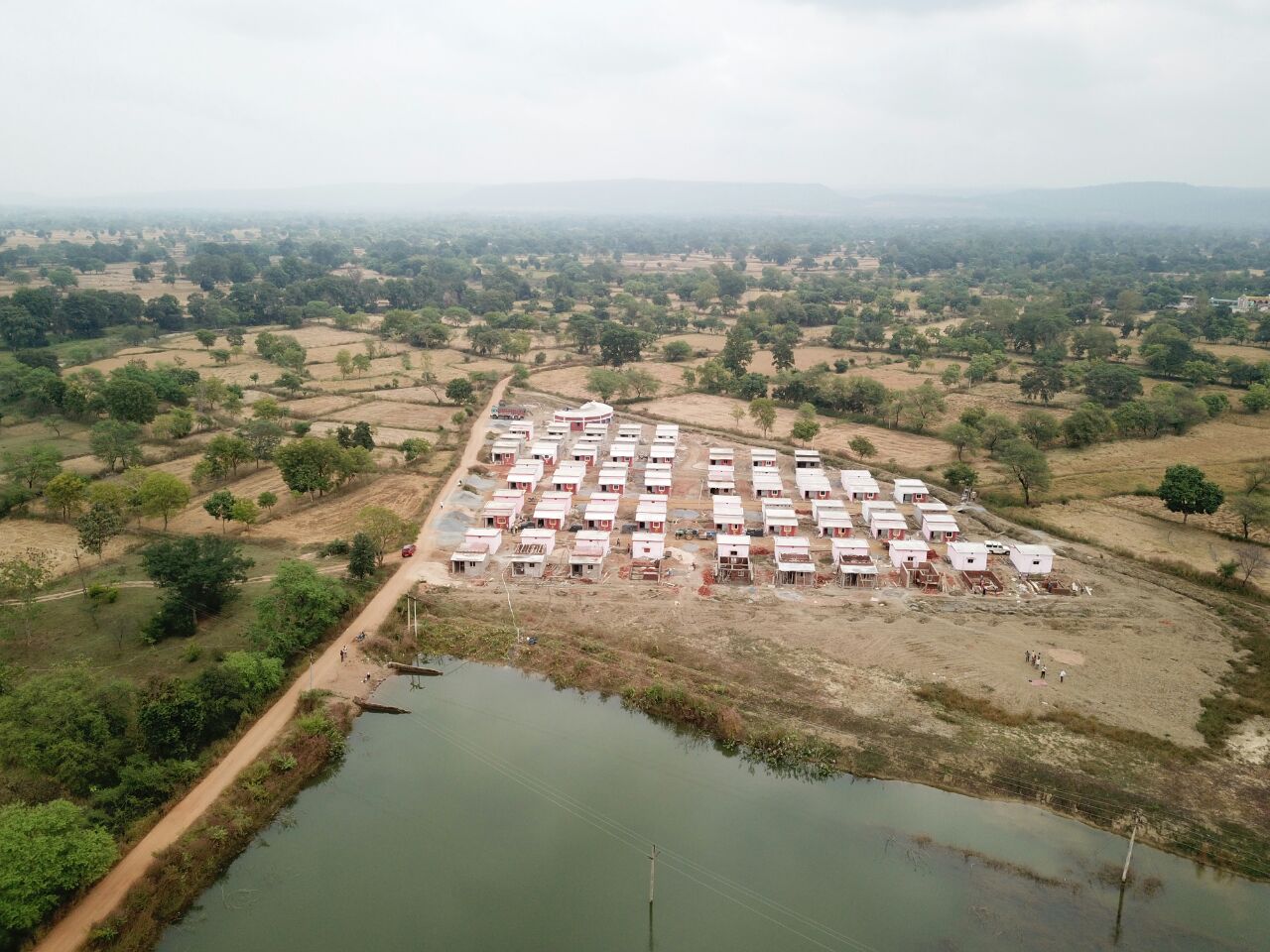Patsendri: A model colony build under the aegis of PMAY
Patsendri: A model colony build under the aegis of PMAY
Background
- The PMAY provides the beneficiary with a house but does not help them with improving their livelihood status. By converging various skill development schemes, the district administration has been able to improve the livelihood opportunities available to the beneficiaries.
- Earlier, the houses conducted under PMAY did not have a colony-like orientation. Patsendri model has brought about a community feeling, which can help in building the social capital.
- The beneficiaries faced various issues like lack of documentation, uncertainty about their eligibility status due to lack of convergence. In Patsendri, various departments have come together to resolve such issues and have provided the facility of insurance, developing Self Help Groups, etc. to the beneficiaries. The departments are also working together by sharing best practices, sharing the list of beneficiaries, responding to the needs of the beneficiaries, and so on.
- The SHGs created in remote areas lack connectivity to the market. The Patsendri model has improved connectivity of Self Help Groups with the market.
- Many times, the beneficiaries misuse the money intended for house construction and have no incentive to return it. The Patsendri model has helped in building social pressure which can increased utilization of the funds for the intended purpose.
Intervention
- Patsendri is a village in the Saraipalli block of the Mahasamund district. A model colony has been developed under the PM Awas Yojana (PMAY), wherein convergence is being sought between various physical work-related schemes and social sector schemes.
- Further expanding on this initiative, the district administration has started convergence of various social sector schemes in Patsendri, and create a self-sustainable model for employment generation, development and for development & positive use of social capital, with a focus on the Patsendri community but which will also serve as an outreach center for the nearby areas. The idea is to bring about a transformation in the lives of the beneficiaries by using the model colony as a one-stop solution for transforming lives.
- Firstly, the convergence of schemes has led to the development of a model colony, wherein the houses, community hall, drainage, CC road has been built under PMAY, toilets are built under NREGA, electricity connection is provided under the Saubhagya Yojana, transformer, poles etc. are being provided under the Mukhya Mantri Majra-Tola Vidyutikaran Yojana, & water supply is being provided under the Nal-Jal Yojana by the Public Health Department.
- Another level of convergence is sought to bring about a change in the lives of the beneficiaries. For capacity building of the residents, various social sector schemes have been converged to create a self-sustainable model for employment generation, and for the development and positive use of social capital. There will be a focus on the residents of Patsendri community, but it will also serve as an outreach center for the nearby areas.
Impact
- The impact was manifold as building toilets, drainage, community hall, houses under PMAY resulted in improved health, helped build social capital, improved the social status of households, and resulted in reducing the spread of water-borne diseases. Providing cooking gas under the Ujjwala scheme meant there is reduction in deforestation as well as air pollution. Skill development aided in reducing poverty and provided financial stability. Establishment of a model Poshan Vaatika provided a source of income to SHGs and improved health of children in Primary Health Centres.
- The decelopment of PMAY houses on the lines of a model colony not only provided the beneficiaries with a pucca house, but also gave them an opportunity to live in a community. By activating the social capital present in the beneficiaries, the administration is witnessing a surge in the demand for various G2C services.
Key Takeaways
- The primary learning is that social capital is inherently present in the citizens, and the government just needs to acts as a catalyst to channelize this resource in the positive direction. By activating the social capital present in the Patsendri beneficiaries, the government is witnessing a surge in awareness as witnessed by the rise in demand for various G2C services.
- The development of PMAY houses on the lines of a model colony not only provides the beneficiaries with a pukka house, but also gives them an opportunity to live in a community.
- Various government departments are able to access the beneficiaries easily due to clustered access, and this has led to an increase in the socio-economic status of the residents.

To Know More Information Click here
Source : NITI Aayog
Last Modified : 8/29/2023
© C–DAC.All content appearing on the vikaspedia portal is through collaborative effort of vikaspedia and its partners.We encourage you to use and share the content in a respectful and fair manner. Please leave all source links intact and adhere to applicable copyright and intellectual property guidelines and laws.
RELATED ITEMS
Model School Khunti
This topic provides information about Model School...
Overview of the Khandwa District
This topic provides information about Overview of ...
Transformation of Aspirational Districts
This topic provides information regarding Transfor...
Solar powered lift and drip irrigation in Gumla
This Topic provides information about Solar powere...
RELATED LANGUAGES
